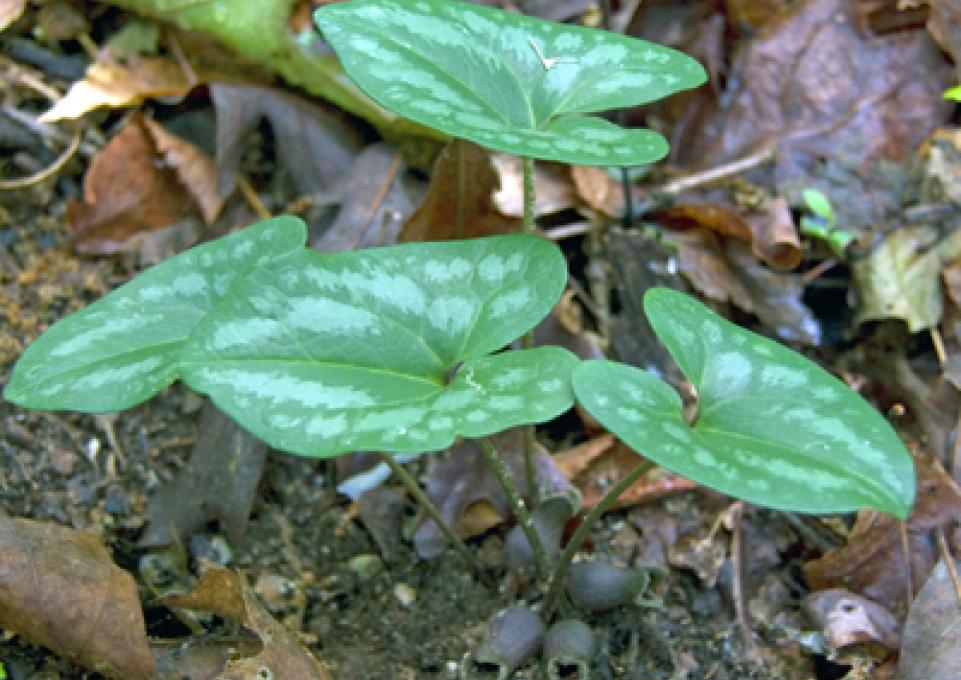
Temperature, rainfall, soil composition, and sunlight may not be the only contributors to a plant’s success. Ants, in their role as seed dispersers, may play an equally important part in determining whether a plant species thrives or fails.
In the October 28 issue of Global Change Biology, Robert Warren, assistant professor of biology at SUNY Buffalo State, and coauthor Mark A. Bradford, assistant professor in the Yale School of Forestry, investigate how the presence of cold- or warm-adapted ants influences early-blooming spring plants. In the article “Mutualism Fails When Climate Response Differs Between Interacting Species,” the authors assert, “Timing is everything when species interact.”
In previous research, Warren showed that a cold-tolerant ant species, Aphaenogaster picea, has been displaced in northern Georgia by a warm-adapted ant species, Aphaenogaster rudis, during three decades of rising minimum temperatures. A. picea ends its winter dormancy in early spring when the minimum temperature reaches 4º C; A. rudis requires a late spring minimum temperature of 10º C. As a result, A. picea forages in early spring when ephemerals drop seeds; A. rudis begins foraging too late to disperse the seeds of the early flowering plants.
Phenology is the study of seasonal life cycle events, such as bird and butterfly migrations, seed-setting by plants, and the emergence of animals—including ants—from winter dormancy. Seasonal cues include daylight and temperature. “Successful species interactions require that the species involved share the same cue,” said Warren.
The cold-adapted A. picea ant species shares temperature cues with Anemone americana, a common early spring wildflower that drops seeds in early spring, and the ants pick up and disperse the seeds. However, A. americana drops its seeds weeks before A. rudis begins foraging so that the dispersal mutualism fails and the seeds remain beneath the parent plants.
“All ecological communities are based on interactions between species,” said Warren. “Climate change is disrupting phenological synchrony.”
While much climate-change research focuses on how climate change directly affects species, this research suggests that by disrupting the synchrony between species, it has important indirect effects on species. Local- and regional-scale transplant experiments have indicated that A. americana survives and reproduces better in southeastern habitats than Asarum arifolium, yet A. arifolium is thriving while A. americana is patchier and at risk of extirpation. “Given that A. americana’s abiotic requirements are being met,” said Warren, “it is reasonable to investigate its biotic requirements.”
In 2006, populations of both plant species were surveyed, and reproductive-sized adults of each species were transplanted. Half were planted at sites north of the A. picea/A. rudis boundary and half south of that boundary. In 2011, Warren’s team surveyed the transplant grids and investigated the placement of the plant’s offspring (seedlings). They also took a very careful look at the ant species by monitoring tuna-bait stations at each grid for 90 minutes every week from March to June 2010 and monthly from March to June 2011. A total of eleven ant species and 3,066 individuals were observed at the foraging stations.
At both sites, the later-blooming A. arifolium offspring were dispersed in a manner that suggested that ants picked up its seeds. However, the early blooming A. americana offspring south of the A. picea/A. rudis boundary (where only A. rudis occurs) clustered around the parent plant, indicating no dispersal. The seed dispersal mutualism recovered, however, in the northern site where A. picea have not been displaced.
“These results suggest that the presence and abundance of effective dispersers, and phenological synchrony, are as important as light, water, and temperature in shaping a plant’s niche,” said Warren.
This research was supported by the National Science Foundation award (DEB-0823293) to the Coweeta Long Term Ecological Research Program.
